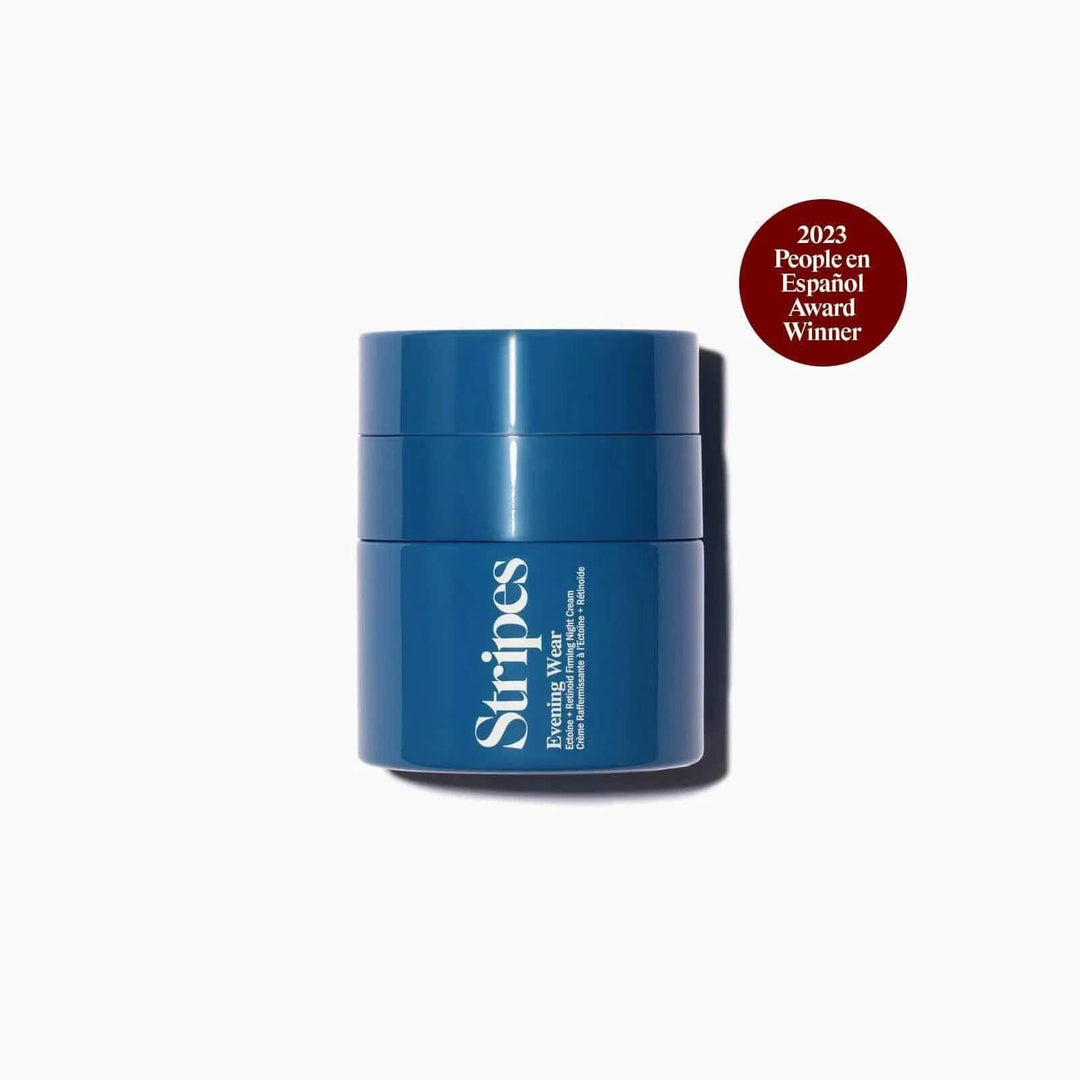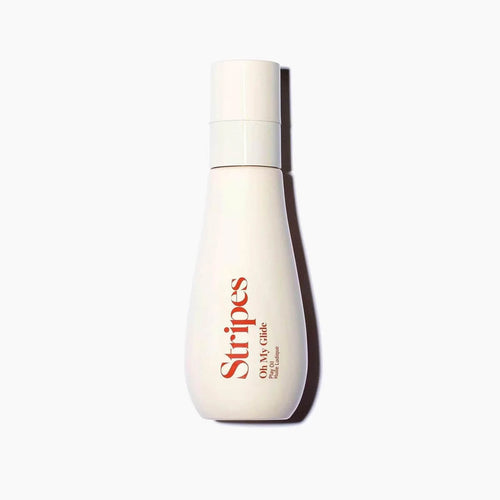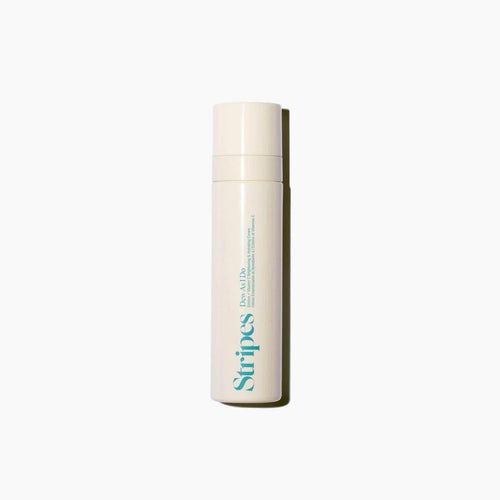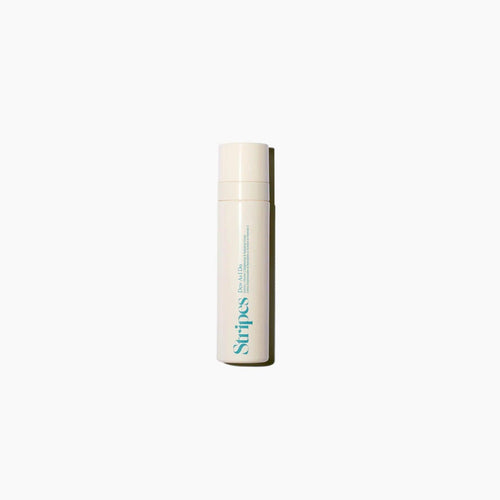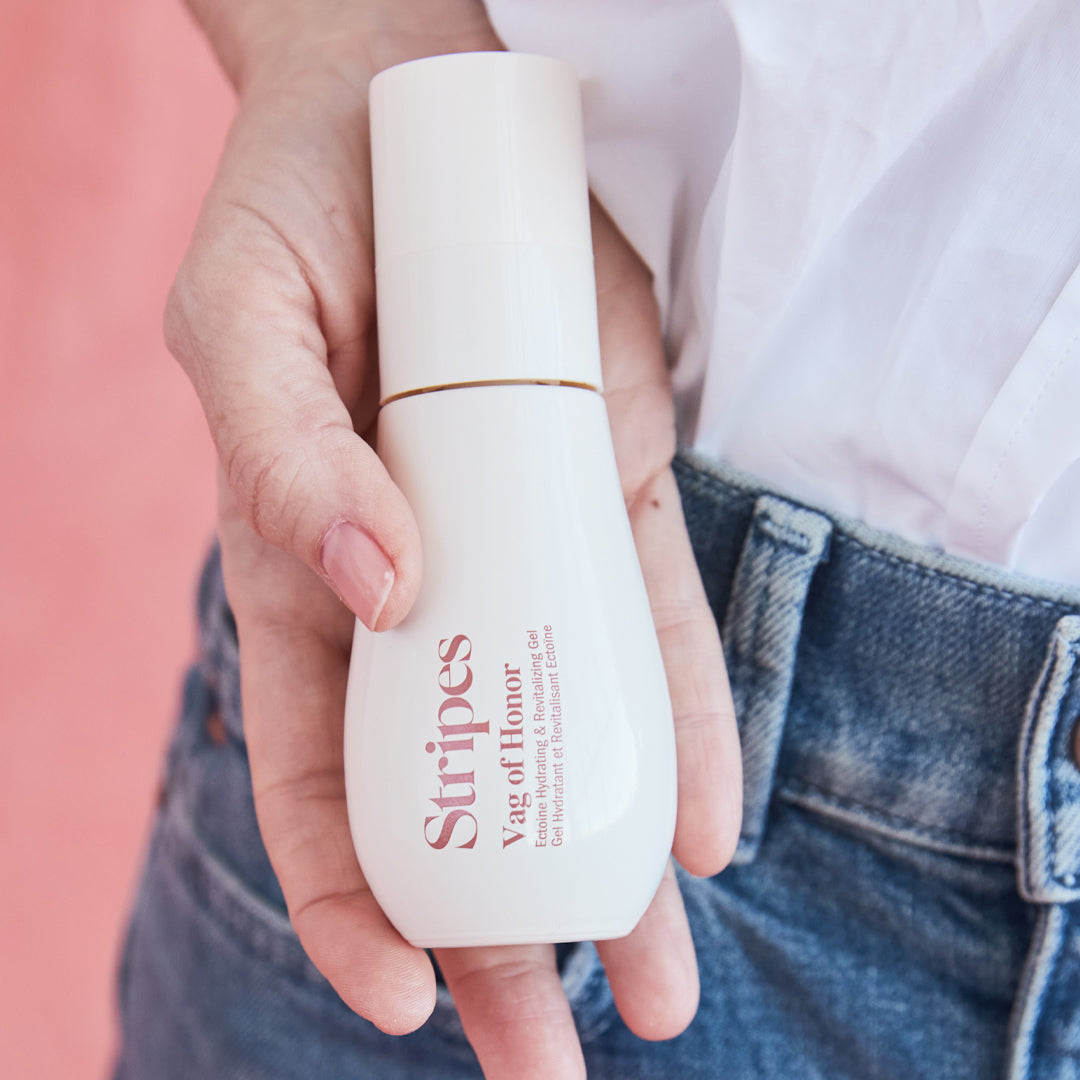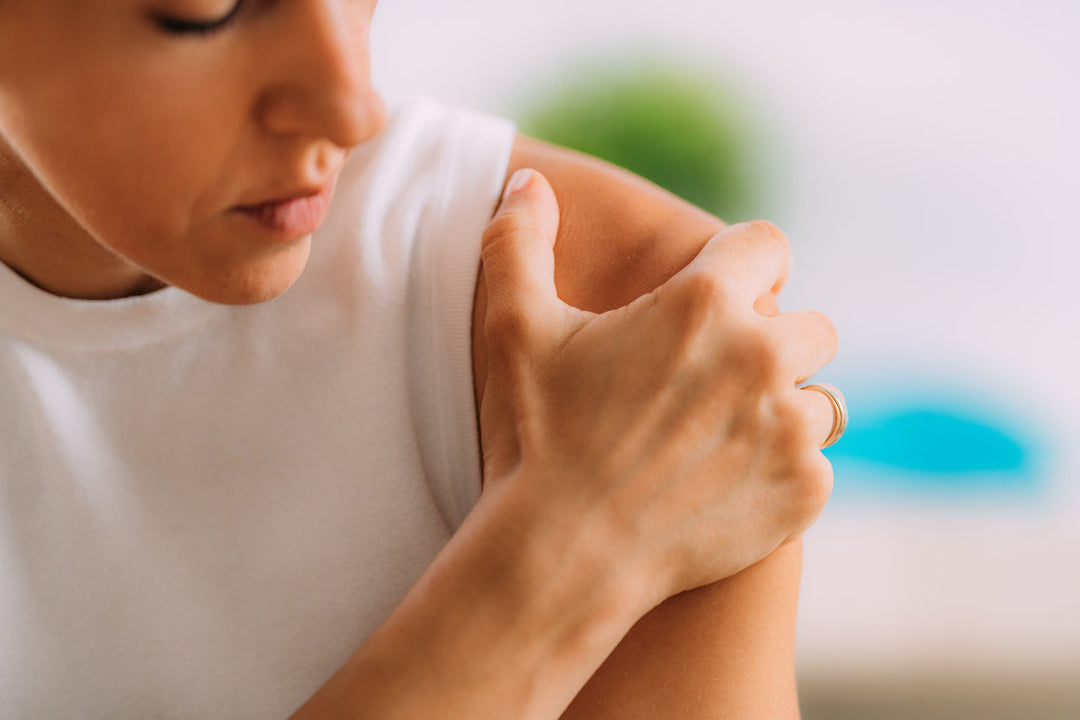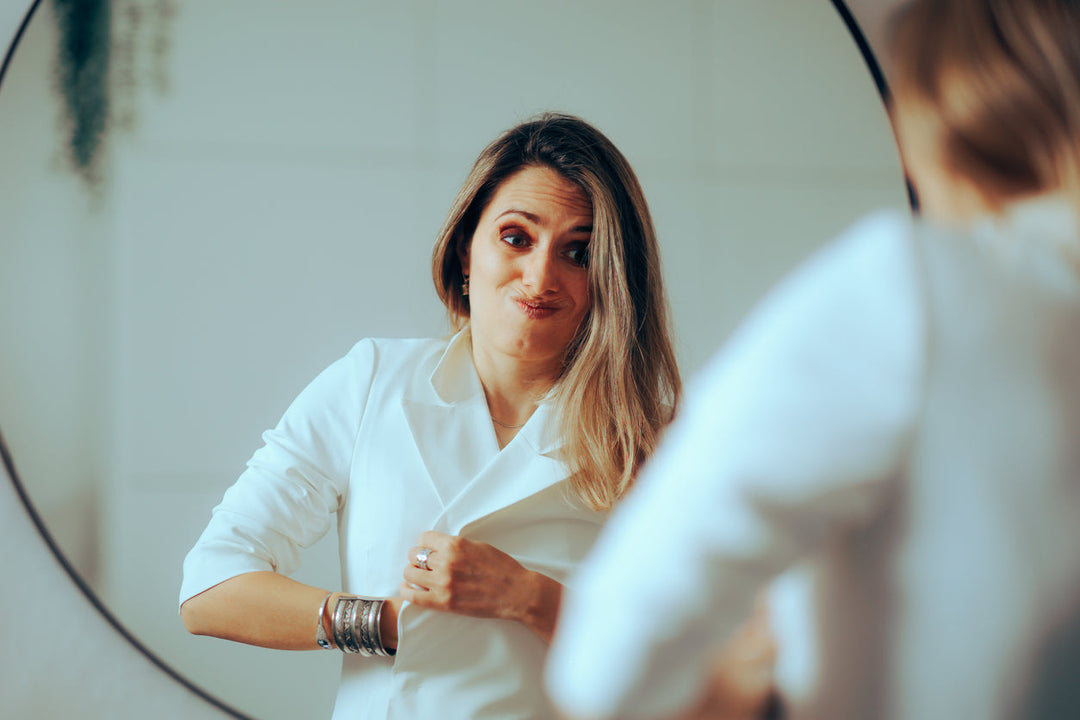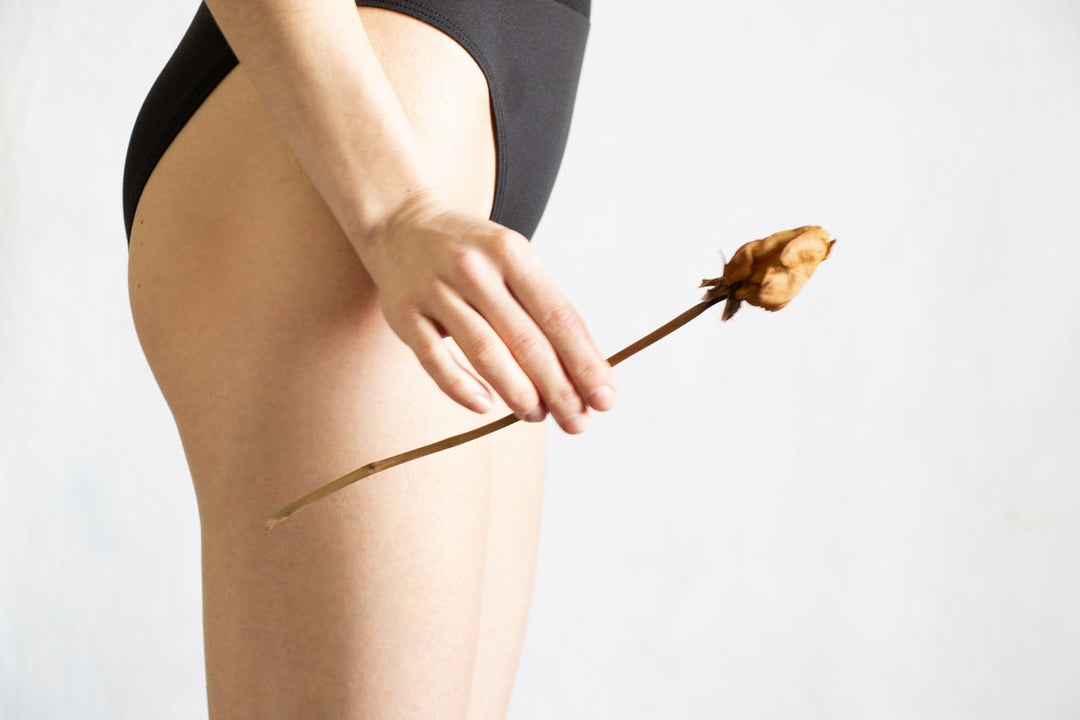Best Bras for Perimenopause Breast Pain
Many of us know that sore breasts are a signal that we're about to start our periods. But in perimenopause, our boobs can really start to hurt.
The medical terms are mastodynia and mastalgia; they refer to the breast pain and soreness that often accompany perimenopause. For some women, it may manifest as a general tenderness of the breast tissue; for others, it’s a brief, sharp pain that comes out of nowhere. Either way, boob discomfort is real — and it occurs because of the upheaval of the hormones progesterone and estrogen.
“The major reason perimenopausal women get breast pain is that their estrogen levels fluctuate significantly during this time, and this can result in breast pain and discomfort,” says Mary Jane Minkin, M.D., an OB-GYN and clinical professor of obstetrics, gynecology and reproductive sciences at Yale University School of Medicine. Unfortunately, it can go on throughout the entirety of perimenopause, which typically lasts five to seven years.
If you feel breast pain, it’s a good idea to have a clinical breast exam and to run any questions by your doctor. But according to the Mayo Clinic, breast pain is usually benign and rarely indicates breast cancer. “Breast pain is a common menopause symptom, but not usually associated with lumps, or cancer,” says Minkin.
And there’s even better news: There’s actually something you can do about it. Buying a well-fitting bra (or four or five) can help not only alleviating discomfort, but also with helping to prevent sagging, and even improving posture. As the marvelous Mrs. Maisel would say: “Tits up!”
Why the Right Bra Can Help Breast Pain
“A bra that fits properly can be transformative,” says Christina Faraj Savarese, owner of The Bra Fit Expert in New York. “You instantly stand up straighter, you’re more comfortable, and clothes fit better. Getting the right size is a game changer, and yet most women have been wearing the wrong one for their entire lives.”
Though even women with well-fitted bras might experience perimenopausal breast sensitivity, there’s also a chance that your extra-sensitive bosoms might “be in pain simply because your bra isn’t giving you enough support, or it’s too small and squishes your boobs all day. You may be constantly pulling up the straps, or pulling down the back band that’s riding up because the size is too small for you.”
In these cases, Minkin notes, “A well-fitting, supportive bra decreases tension on the ligaments in your breasts, and along with the slight compression, helps to ease pain.”
But Wait, Are My Boobs Getting Bigger??
Yes, this is also real. It’s possible to find that your breasts are getting bigger, due to overall weight gain during perimenopause, or increased breast density that can occur with age. “Our weight and our breasts fluctuate throughout the month, not just when we go through menopause,” Savarese says. “Any hormonal shifts affect your breasts, so it’s important to rethink and refit your bras every six to eight months.”
Many women may also notice some back or side fat spilling out from their bras, which is called “fluff” in the bra biz — and that fluff is caused by wearing a poorly fitting bra. “A good bra is keeping all of this securely, and comfortably, in place, which also helps ease breast pain by supporting the breast tissue,” Savarese says.
What Kind of Bra Is Best?
For boob pain, comfort is obviously the goal. “You also want to provide lift, adequate support and stability to reduce stress on the ligaments and connective tissue of your breasts,” says bra fit expert Liza Antoniou, author of The Perfect Fit. She recommends trying a seamless, wire-free bra, which can be more comfortable for sensitive breasts.
“Sports bras, known for their snug fit, can minimize movement and provide gentle compression that helps to ease discomfort,” Antoniou advises. “Fuller-breasted women should opt for wider, adjustable straps to distribute weight more evenly and reduce pressure on the shoulders. You may also want to try one that’s made from breathable, moisture-wicking materials, especially if you’re experiencing hot flashes during perimenopause.”
All that being said, you and your boobs are one of a kind. Some fuller-busted women want an underwire for more support, while smaller-busted people may feel it digs into their skin. The bottom, er, top line: You do you. In order to find the bra that you’ll finally feel comfortable in, you’ll have to experiment with different options, styles, brands, and sizes.
3 Tips for the Best Fit
Like kissing frogs in order to meet Prince Charming, you’ve got to try on a lot of bras to find the right one. Getting a professional bra fitting can save some trial and error, but if you can’t, these DIY bra fit pro tips will lead you in the right direction.
Know your bra fit math. First, get your measurements right: Measure under your bust. This is your band width (so to speak). If your measurement falls on a half-inch, round it up to the next whole number. Now, measure around the fullest part of your bust. Your cup size is the difference between these two numbers. For example, if your band measurement is 32 and your boobs are 36, then the difference is 4, which equals a D cup. (1=A, 2=B, 3=C, 4=D, and so on.)
Your size is an excellent starting point, but it’s not foolproof. Remember that all boobs — and bras — are unique. “These measurements don’t take into account your height, weight, the density of your breast tissue, your side fluff, or that one breast may be a tiny bit bigger than the other,” Savarese says. “There are so many variables, and while you could be a size 32D in one brand or style, you may be a size 34D in another.”
If your cups runneth over, the size is too small. “The cups should fully encapsulate your breasts without any spillage or gaps,” Antoniou says. “The band should fit snugly, but not tightly, around your upper rib cage, and the back should be parallel to the front.” Savarese points out that if the band rides up in the back, it may be too large while the cup size is too small. Move around, lift your arms above your head, and make sure the bra keeps everything in place.
Bra Shopping 101
Best for smaller busts: “A lightly lined, smooth T-shirt bra with stretchy lace sides to pull in any side fluff,” Savarese says. Check out the Natori Bliss Perfection T-Shirt Bra.
Best for larger busts: “Great for DD and up, to hug everything in securely. It’s a magic bra,” Savarese says. Check out the Elomi Matilda Plunge Bra.
Best sports bra with support: Reviewers rave about its comfort, and Wacoal is a staple for a reason. Check out the Wacoal Simone Sport Underwire Bra.
Best all-around support: “Seamless coverage in front and a wider back band that holds in fluff,” Savarese says. Check out the Wacoal Back Appeal Underwire Bra.
Best wire-free bra: “I call this ‘The Unicorn’ because it’s a wire-free and seamless push-up that looks and feels amazing on all sizes,” Savarese says. Check out the Skarlett Blue Entice Wireless Push-Up T-Shirt Bra.
Gina Way is a writer and editor specializing in beauty, health, and lifestyle content. Her work has been featured in Marie Claire, Harper's Bazaar, Martha Stewart Living, Real Simple, Cosmopolitan, and Shape. She also writes digital content for Allure, The Cut, Refinery 29, Vogue, OprahDaily, Violet Grey, Well + Good, and more.

